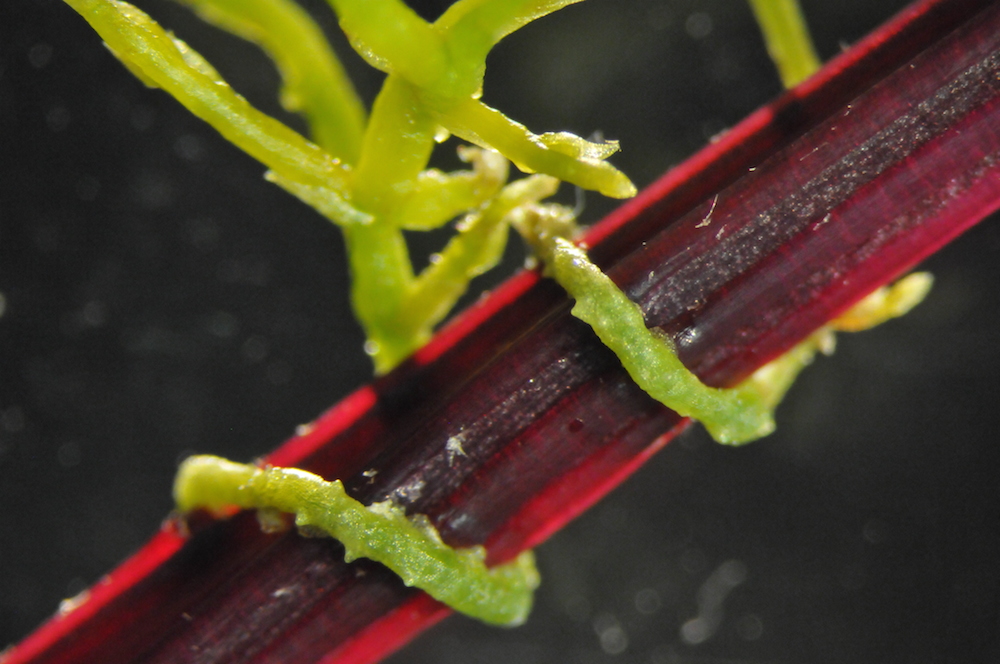Vampire Plant Sucks Victim's Genes While Feeding

Like an herbivorous Count Dracula, a snakelike vine coils around its leafy victim, punctures its stem and proceeds to suck out its life juices.
The parasitic plant Cuscuta pentagona, commonly known as strangleweed or dodder, preys on many common crop plants. Not only does the parasite siphon water and nutrients from its host, but it also exchanges genetic messages with its victim, according to a study detailed today (Aug. 15) in the journal Science.
The findings reveal a new way that plants communicate with each other, and the study may help scientists understand how to combat parasitic plants that destroy food crops around the world, the researchers said. [See time-lapse video of vampire plant strangling its victim]
"It’s a good parasite, so it doesn’t rapidly kill its host," said study co-author James Westwood, who has the awesome title of professor of plant pathology, physiology and weed science at Virginia Tech in Blacksburg, Virginia.
And despite its vampirelike nature, "There's nothing supernatural about it," Blacksburg told Live Science.
Westwood and his colleagues studied how strangleweed parasitizes two common plants — tomatoes, and the small, flowing plant Arabidopsis.
Once the weed coils around its host plant, it uses sharp appendages called haustoria to penetrate the host's tissue and suck out sugars and other nutrients. Previously, Westwood discovered that along with these nutrients, the weed also transports RNA, the genetic material cells use to translate instructions in the organism's DNA into cellular machinery, or proteins.
Get the world’s most fascinating discoveries delivered straight to your inbox.
In this study, the researchers examined the movement of a type of RNA called messenger RNA (mRNA), the genetic messages a plant uses to control growth processes such as leaf shape and root growth.
Westwood and his colleagues genetically sequenced the mRNA of strangleweed growing on tomato and Arabidopsis plants. These tiny molecules were thought to be too fragile to be passed between plant species, yet Westwood found that large amounts of mRNA were moving from the tomato and Arabidopsis to the strangleweed, and vice versa.
Almost half of the Arabidopsis mRNA was found in the parasite, and a quarter of the parasite's mRNA was found in the host Arabidospis plant. A much smaller amount of mRNA flowed between the weed and the tomato plant, the researchers found.
"We're finding there is a massive, bidirectional movement of RNA between the host and the parasite," Westwood said. Like a hacker accessing the internal correspondence of a company, the parasite may be intercepting messages about the host plant's growth and development, he said.
At the same time, the weed is also sending messages to the host plant, which may be operating like a genetic Trojan horse, making the host more susceptible to the invading plant, Westwood said.
However, more research is needed to fully understand how the plants are communicating, he said.
The findings may demonstrate an exciting new means of communication between plants, which are already known to engage in sophisticated chemical signaling. "We just never thought that RNA could be the signal with the environment," Westwood said, adding that this type of communication between plants "may be more common than we think."
Follow Tanya Lewis on Twitter and Google+. Follow us @livescience, Facebook & Google+. Original article on Live Science.



